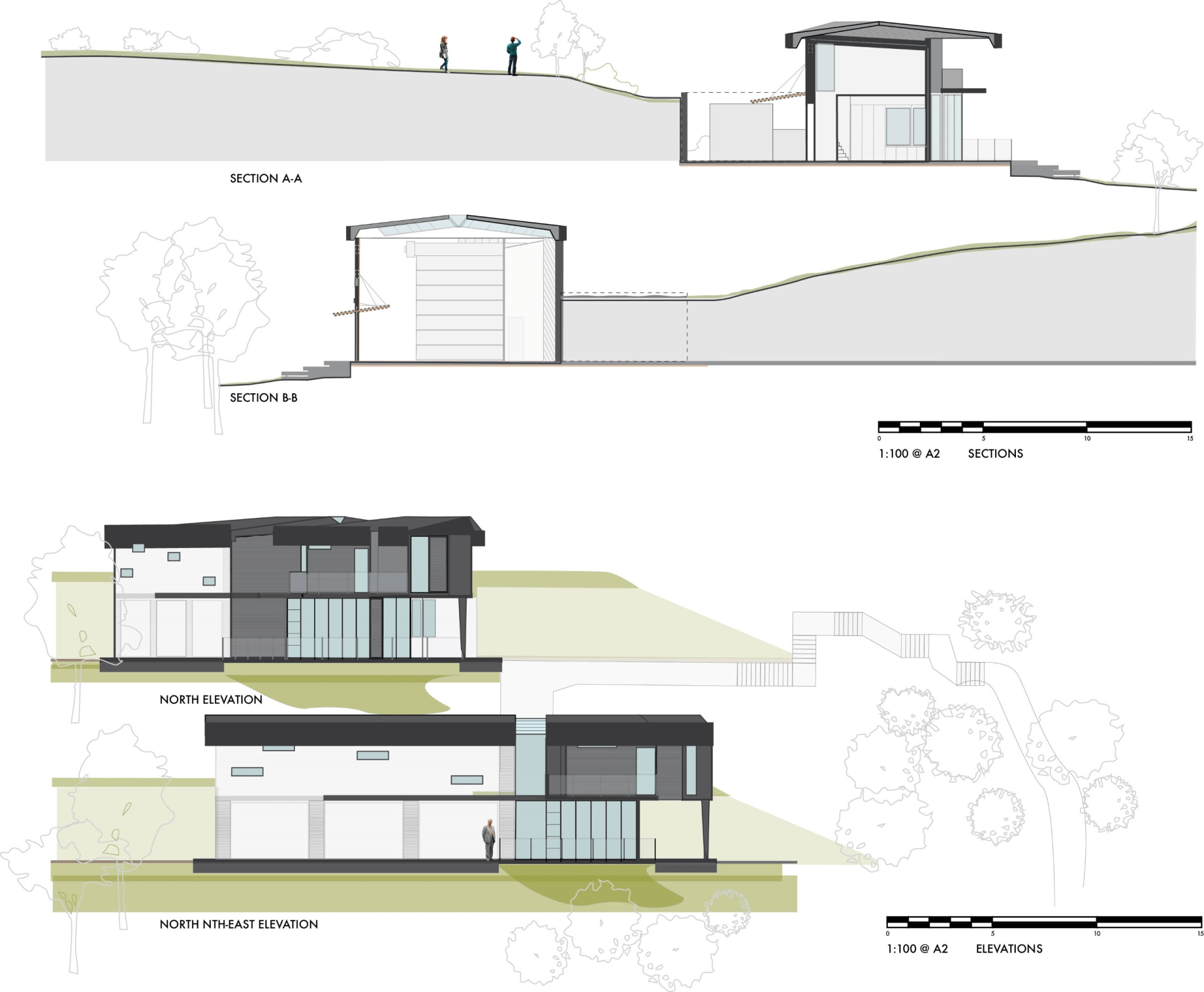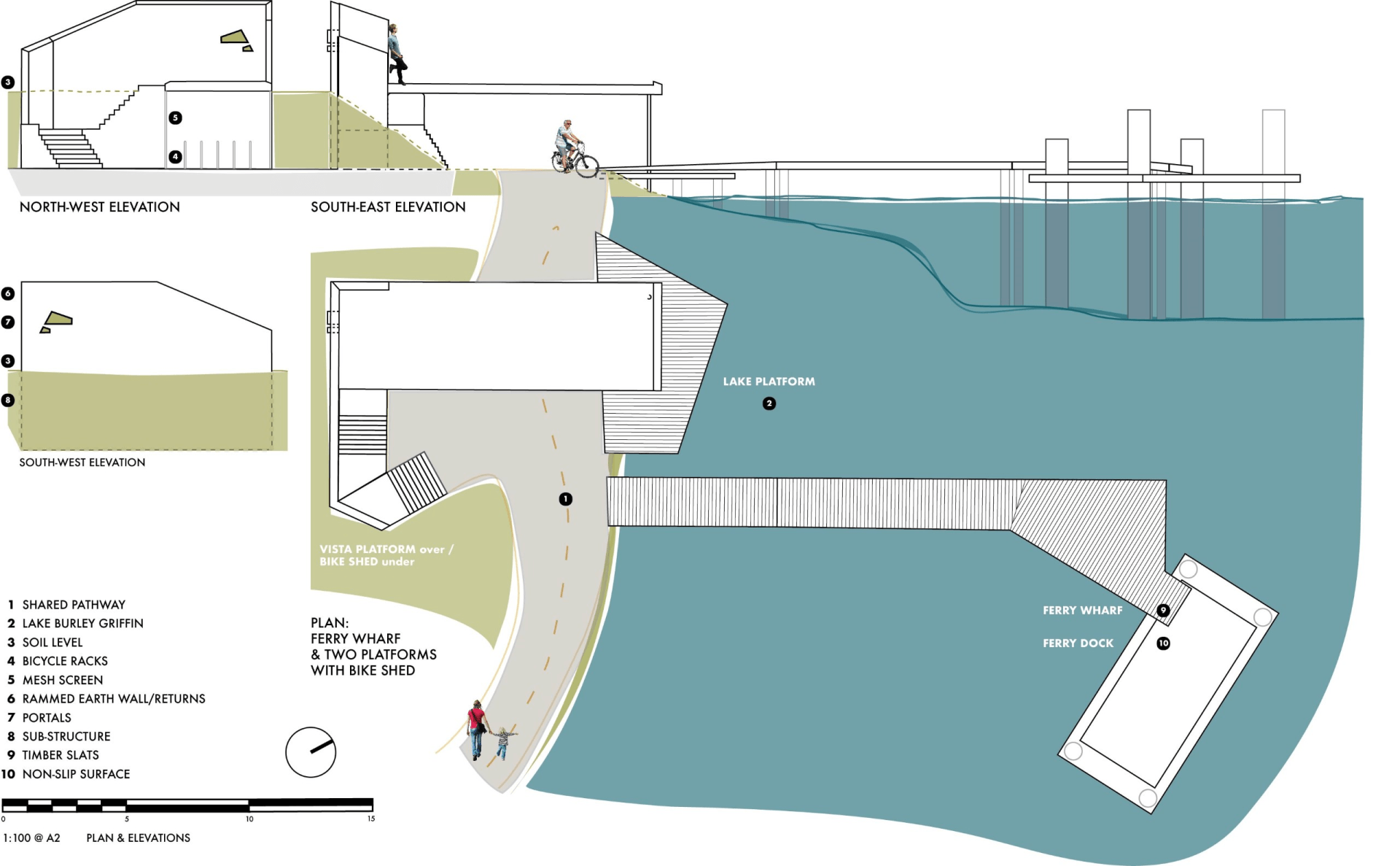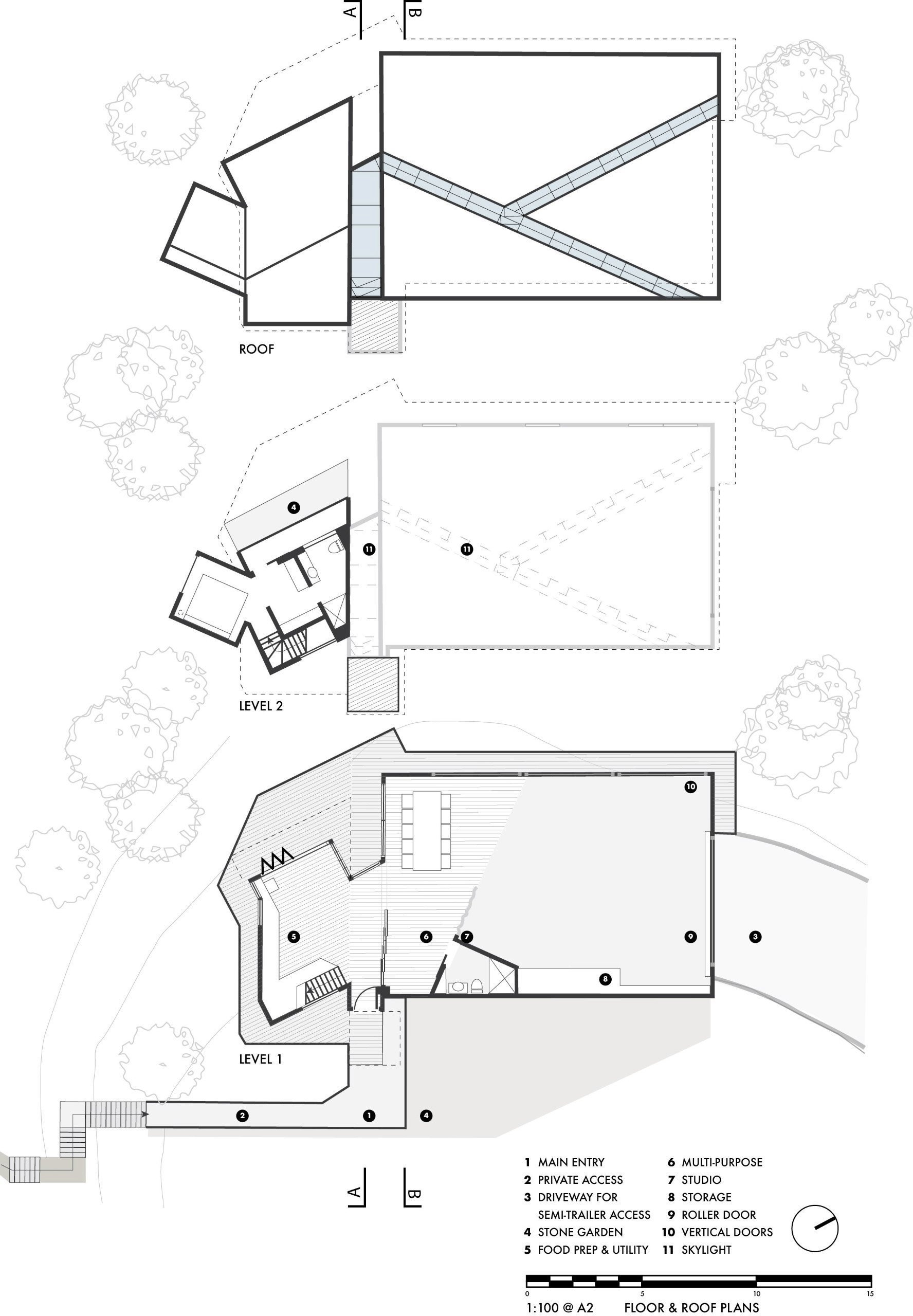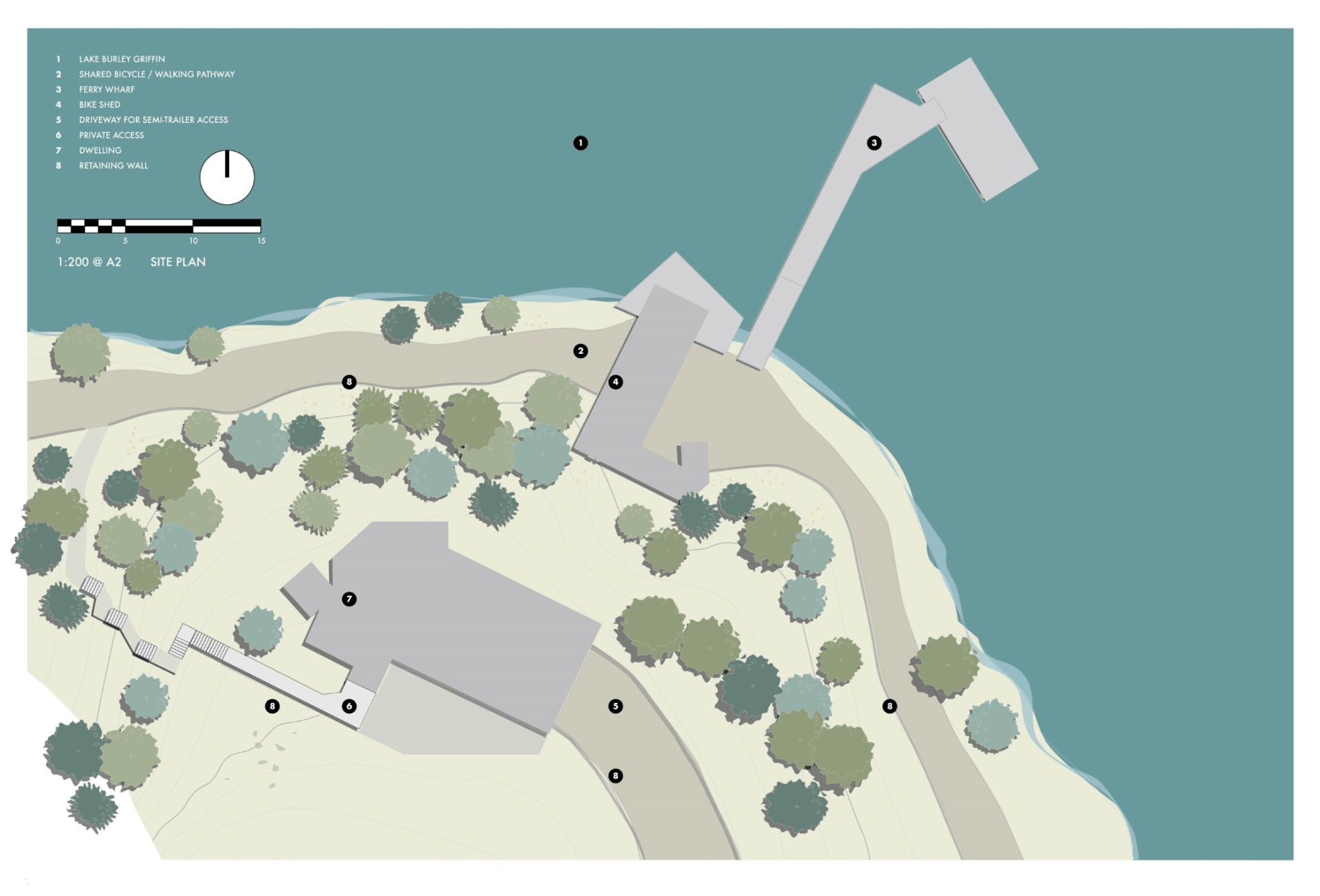
Cassandra Grass
I am a storyteller. I consider all senses, bringing an element of theatre to evoke an emotional response, weaving and layering elements to shape an experience. I am encouraged by solutions that challenge perceptions and that recognise the economic and ecological value of placing people at the centre of the environment. I combine my experience and skills as a Designer and Creative Director to think and explore in 3D, designing for the places in which we live, work, learn and come together.
House for One Person & Ferry Stop
Positioned on the land of the Ngunnawal people, on the foreshore of Lake Burley Griffin at Attunga Point, ACT, House for One Person provides a modest dwelling for modern day life adapting for two people to 'work-from-home'. The occupant, British Sculptor, Anish Kapoor, embraces public comment though is a private person. As his sculptures include large, site-specific civic installations, he requires an expansive and adaptable workspace. Respectful of the existing typography, the uninterrupted views across the lake inspire a response to expand outward while minimising the visual scale, particularly of the double-height Studio. Reflecting the city planning of Canberra and acknowledging the position opposite the National Museum of Australia (NMA), a directional alignment established a central axis defining the points of entry/exit and circulation between personal and work zones. The zones share a continuous language through the proportions and forms, addressing the sight-lines out to the horizon, up through skylights and along slim horizontal windows. The central axis is reflected through the flow of materials, the skylight above, and the retractable studio wall. The Studio and Ferry Stop align to the NMA while the bedroom and living zones of the House pivot to retain northern daylight and provide privacy. The public Ferry Stop appears to float on the edge of the lake. Pedestrians and cyclists continue an uninterrupted passage under one of two viewing platforms. The Vista Platform (elevated) shelters a small number of bike racks underneath, while built-in 'peepholes' tailor views to Kapoor's work-in-progress when the Studio's adjustable doors are open. A private pathway, to the House (and Studio), commences as a semi-private path, wraps along and deliberately turns, a movement away from the lake with purpose. The visual language and change of materials suggest a private entrance. This interplay is engaged throughout the site and reflects Kapoor's personal need for privacy while exposing vulnerabilities through his artistic expression and commissions.




